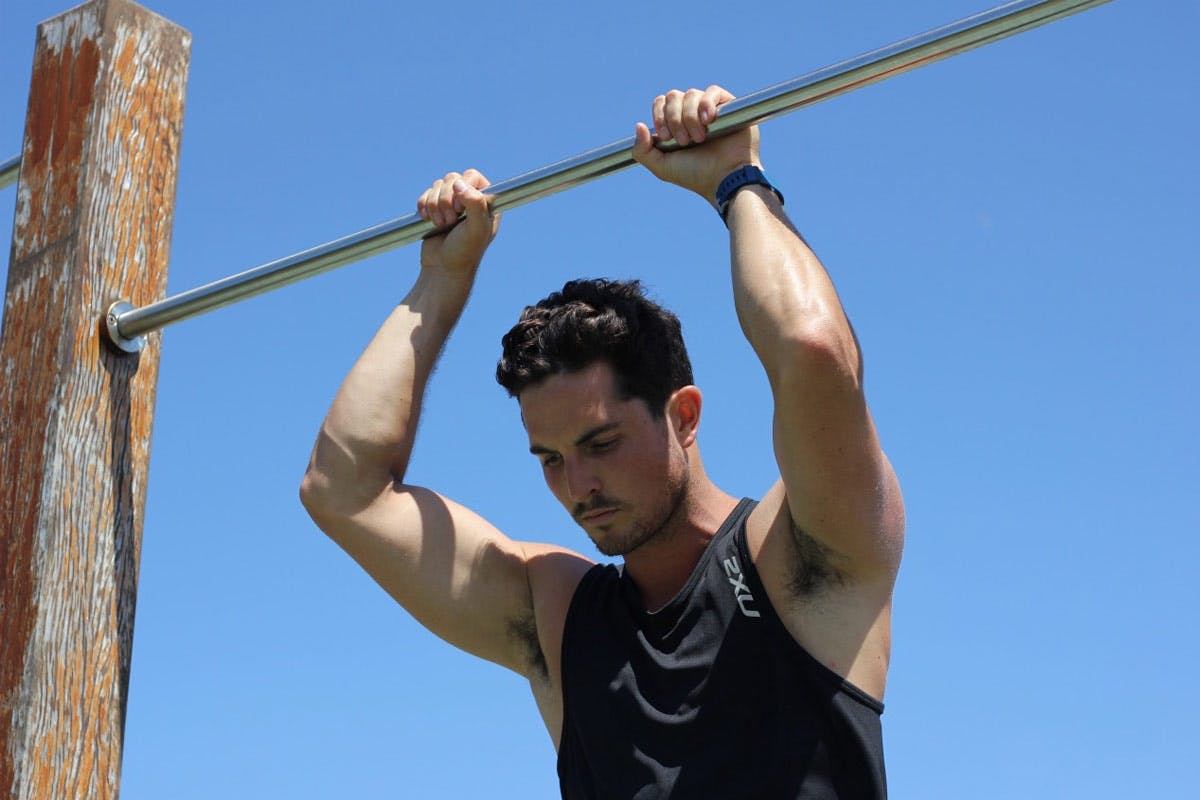The Perfect Pull Up Technique
According to our ambassador and Exercise Physiologist, Drew, this is the recipe for the perfect pull-up.

Drew Harrisberg
2017-05-12

According to our ambassador and Exercise Physiologist, Drew, this is the recipe for the perfect pull-up.
As Drew says, 'don't neglect your basic pull-ups,' because they're, 'bloody effective!' We're putting this method to the test - will you?
1️. Start from the full hang position:
Allow shoulders to raise to your ears (scapular elevation) and head through 'the window'. This allows a full lat stretch.
2. Initiate the upward movement with a scapular depression and retraction:
Shoulder blades down and back. You'll notice my back engage before my arms begin to bend. This requires lower-trap engagement.
3. Humeral adduction (a key function of the lats):
Drive your upper arms towards the midline of your body. In other words, focus on squeezing your elbows towards your hips. This will activate the lats properly.
4. Pause and squeeze at the top:
Think "chest out".
5. Maintain scapular engagement during descent:
Descend slowly with control. Do not free fall.
Common mistakes people make
1. Arm-dominant ascent:
Arms bend before engaging the back properly. This happens when people have weak back muscle and dominant biceps.
2. Scapular elevation during ascent:
Shoulders to ears on the way up. Too much upper-trap activation.
3. Elbows point forward:
The action of the bicep is to flex the elbow, but because the hands are in a fixed postition, the biceps are at a mechanical disadvantage. At this point, weak lats will be compensated for by the elbows pointing forward to allow the biceps to bend the elbow.
4. Rounding of shoulders at the top causing a concave/hollow chest position.
DON'T COUNT YOUR REPS - MAKE YOUR REPS COUNT!
Follow Drew:
@_drewsdailydose
facebook.com/Drews-Daily-Dose
Products in this post

Raw Cacao WPI
